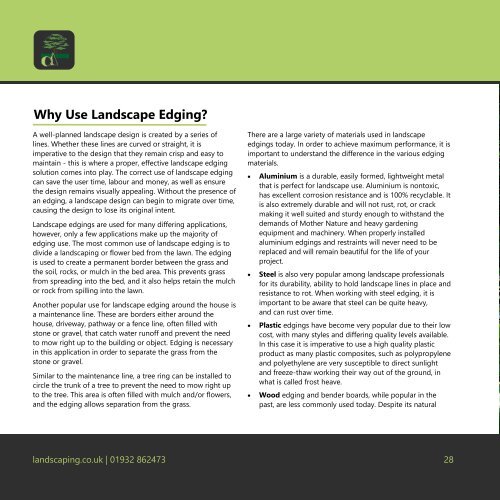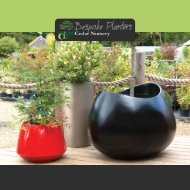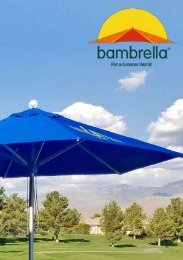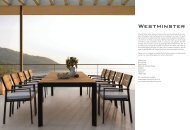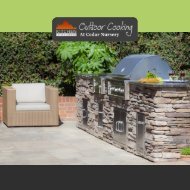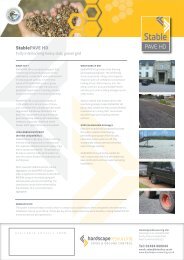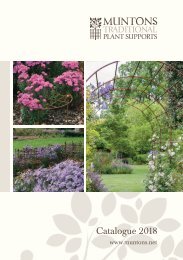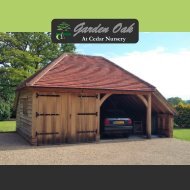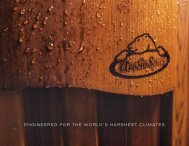Landscape Stabilisation & Edging_MB
Create successful ePaper yourself
Turn your PDF publications into a flip-book with our unique Google optimized e-Paper software.
Why Use <strong>Landscape</strong> <strong>Edging</strong>?<br />
A well-planned landscape design is created by a series of<br />
lines. Whether these lines are curved or straight, it is<br />
imperative to the design that they remain crisp and easy to<br />
maintain - this is where a proper, effective landscape edging<br />
solution comes into play. The correct use of landscape edging<br />
can save the user time, labour and money, as well as ensure<br />
the design remains visually appealing. Without the presence of<br />
an edging, a landscape design can begin to migrate over time,<br />
causing the design to lose its original intent.<br />
<strong>Landscape</strong> edgings are used for many differing applications,<br />
however, only a few applications make up the majority of<br />
edging use. The most common use of landscape edging is to<br />
divide a landscaping or flower bed from the lawn. The edging<br />
is used to create a permanent border between the grass and<br />
the soil, rocks, or mulch in the bed area. This prevents grass<br />
from spreading into the bed, and it also helps retain the mulch<br />
or rock from spilling into the lawn.<br />
Another popular use for landscape edging around the house is<br />
a maintenance line. These are borders either around the<br />
house, driveway, pathway or a fence line, often filled with<br />
stone or gravel, that catch water runoff and prevent the need<br />
to mow right up to the building or object. <strong>Edging</strong> is necessary<br />
in this application in order to separate the grass from the<br />
stone or gravel.<br />
Similar to the maintenance line, a tree ring can be installed to<br />
circle the trunk of a tree to prevent the need to mow right up<br />
to the tree. This area is often filled with mulch and/or flowers,<br />
and the edging allows separation from the grass.<br />
There are a large variety of materials used in landscape<br />
edgings today. In order to achieve maximum performance, it is<br />
important to understand the difference in the various edging<br />
materials.<br />
• Aluminium is a durable, easily formed, lightweight metal<br />
that is perfect for landscape use. Aluminium is nontoxic,<br />
has excellent corrosion resistance and is 100% recyclable. It<br />
is also extremely durable and will not rust, rot, or crack<br />
making it well suited and sturdy enough to withstand the<br />
demands of Mother Nature and heavy gardening<br />
equipment and machinery. When properly installed<br />
aluminium edgings and restraints will never need to be<br />
replaced and will remain beautiful for the life of your<br />
project.<br />
• Steel is also very popular among landscape professionals<br />
for its durability, ability to hold landscape lines in place and<br />
resistance to rot. When working with steel edging, it is<br />
important to be aware that steel can be quite heavy,<br />
and can rust over time.<br />
• Plastic edgings have become very popular due to their low<br />
cost, with many styles and differing quality levels available.<br />
In this case it is imperative to use a high quality plastic<br />
product as many plastic composites, such as polypropylene<br />
and polyethylene are very susceptible to direct sunlight<br />
and freeze-thaw working their way out of the ground, in<br />
what is called frost heave.<br />
• Wood edging and bender boards, while popular in the<br />
past, are less commonly used today. Despite its natural<br />
landscaping.co.uk | 01932 862473 28


